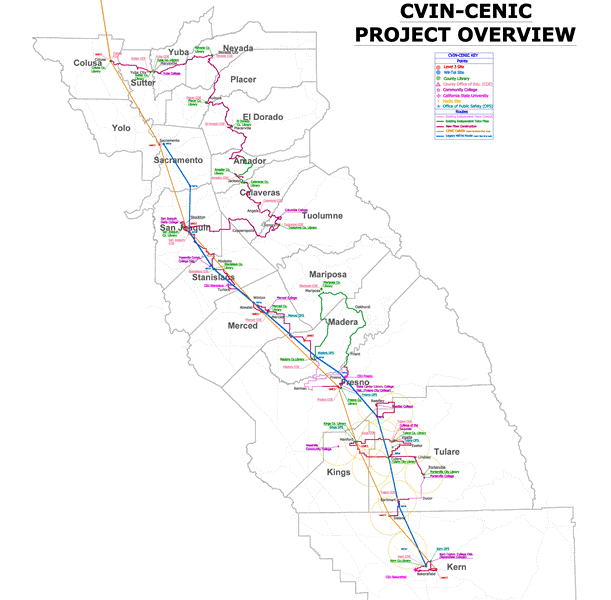Location
Construction Date
Project Size
Project Cost
Project Overview
The Central Valley Independent Network (CVIN) of telecommunication providers approached Yamabe & Horn due to their roles as the City Engineer for the City of Orange Cove, as the Central Valley Next-Generation Broadband project would cross through City limits. Because of Yamabe & Horn’s extensive experience with CalTrans for regional projects, CVIN added them to the team to handle the design and utility research for 36 access points across four counties.
Funding Sources:
NTIA
CPUC CASF Fund
Project Team:
David Horn, PE
David Jayne, LS
Jason Bradshaw
Eric Rivera
Project Origin
A large percentage of Central Valley residents have been severely under served with regard to broadband availability. As of 2007, 49% of households and 15% of the communities within the region did not have broadband connectivity of any kind.
Pairing these facts with the FCC National Broadband Plan that called for affordable access across the nation, a number of independent telecommunications companies came together to secure the funding and drive the expansion of the fiber-based infrastructure throughout the Valley.
In August 2010, the federal grants were awarded and the project began.
Project Details
This project extended to many rural areas, crossing State Routes in the process. Due to the funding requirements, there was a compressed timeline for the entire project, so getting Right of Way Access approval was a critical stage that needed to be handled without delay.
The first step was to identify each location where the facilities would need to be installed within Caltrans right-of-way and completing the utility research ahead of time so all designs and applications could be completed as quickly as possible. Yamabe & Horn pulled the as-built drawings from CaltTrans archives and developed plans for each of the 36 applications. Since the construction involved the use of directional bore technology, the designs had to incorporate allowances for spatial requirements of trenchless technologies as well as the stringent Caltrans clearance requirements in state right-of-way.
Caltrans has a rigid system for applications that requires a strict attention to detail and adherence to their standards. We were able to use our relationship with the Caltrans staff to submit plans that resulted in only minor comments. Our utility research for this was extensive as we reviewed thousands of Caltrans documents to insure that we were not missing existing facilities. Microtunneling was used to cross access restricted freeways, with some bore lengths extending 400 to 500 feet long and 30-40 deep.




